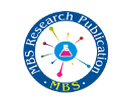Past Issue | Volume | Volume 7,Issue 10,Oct,2021
Abstract:-
Background and aims: With the deepening of the researches on uric acid, especially in the study of metabolic diseases, uric acid has been found to be closely related with diabetes. Uric acid cause a series of pathophysiological changes through inflammation, oxidative stress, vascular endothelial injury, and so on and thus subsequently promotes the occurrence and development of diseases. The objective of the study is to estimate uric acid level and its relation with diabetes, biomarker for deterioration of glucose metabolism. Methods: A cross-sectional study with subgroup analysis, 60 cases and 60 patients with complication. Fasting blood sugar (FBS), Post prandial blood sugar (PPBS), GlycatedHb (HbA1c) were also measured. Results: Thus, out of 60 cases have high uric acid level which is found to be significant with p value (<0.009). Conclusion: Uric acid levels have tendency to decrease in early course of disease and tends to increase with onset of complications. Thus, a preventive, cost-effective approach is available with potential implications for public health.
![]() ADVANCED HEPATOCELLULAR CARCINOMA WITH RUPTURE: AN AUTOPSY CASE REPORT
ADVANCED HEPATOCELLULAR CARCINOMA WITH RUPTURE: AN AUTOPSY CASE REPORT
Sam Ewune Kinako and Boma Precious Athanasius
Abstract:-
Ruptured hepatocellular carcinoma is not common, but when it occurs, it has a high mortality rate. The case report presents a 35year old negroid male, who is a chronic alcoholic and a chain cigarette smoker who was referred from a peripheral health centre to the Accident Department with a diagnosis of chronic liver disease with pulmonary tuberculosis. He was initially clinically stable,but was noticed to be gradually becoming paler. The findings of the autopsy showed massivehemoperitoneum, ruptured nodule of hepatocellular carcinoma, metastasis to the right and left lungs, macronodular liver cirrhosis, severe pallor and jaundice. The prognosis of survival was poor and it was due to an advanced stage of the disease and rupture of the tumour nodule which resulted into an uncontrollable massive hemoperitoneum anddeath.
Need PHD Research Writing Help?

